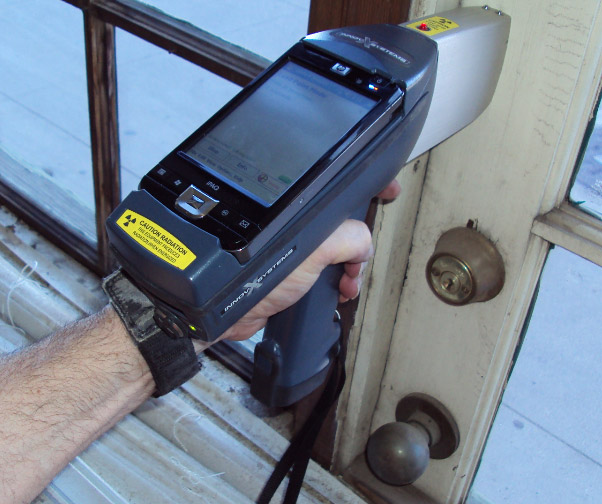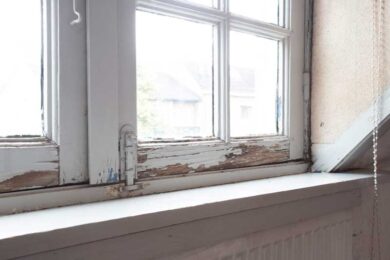NYC Lead Removal Contractors-- Get Safe and Effective Solutions
NYC Lead Removal Contractors-- Get Safe and Effective Solutions
Blog Article
Step-by-Step Refine for Successful Lead Offense Remediation
Following this, adherence to government and state guidelines is extremely important to developing an efficient removal plan. The actual removal calls for competent employees to execute these strategies while purely adhering to safety and security procedures. What happens after the remediation is finished?

Detection and Assessment
Discovery and analysis are critical actions in the removal of lead infractions. To make sure an effective remediation process, it is crucial to conduct a comprehensive exam of the atmosphere where possible lead direct exposure exists.
This consists of reviewing the level and seriousness of contamination, as well as recognizing populations at danger, especially youngsters and expecting ladies. The gathered data ought to be meticulously recorded to support the growth of an effective remediation approach.
Moreover, it is crucial to focus on areas with the highest degree of contamination and those that pose the greatest health risks. Effective communication with stakeholders, consisting of homeowner, locals, and public health and wellness officials, is crucial for making certain that all events are notified concerning the findings and the succeeding steps needed for removal. This initial discovery and evaluation stage prepares for an effective lead infraction removal procedure.

Legal and Regulatory Compliance
Browsing the landscape of lawful and regulative conformity is an essential element of successful lead violation remediation. Compliance guarantees not just the safety of damaged populaces however additionally the trustworthiness and legal standing of the organization in charge of removal. Rules regulating lead contamination are diverse, incorporating federal, state, and local regulations. At the government level, the Epa (EPA) sets rigorous requirements under the Harmful Compounds Control Act (TSCA) and the Lead-Based Paint Improvement, Repair Service, and Paint Policy (RRP Policy)
State and neighborhood regulations can differ, often imposing extra responsibilities or more rigid requirements. Consequently, a thorough understanding of all pertinent lawful structures is critical. This entails thorough documents of all remediation activities to show compliance. Failure to abide by these regulations can cause serious penalties, consisting of significant fines, legal action, and reputational damages.
Involving lawful specialists specialized in environmental regulation can facilitate navigating these complexities. Regular training and qualification for all workers involved in the remediation procedure are likewise compulsory to ensure adherence to safety and regulative requirements. By prioritizing lawful and regulatory conformity, organizations can successfully minimize dangers and attain a successful removal result.
Planning the Removal
Successfully preparing the removal of lead infractions begins with a comprehensive analysis of the infected site. This first analysis should include a comprehensive site investigation to determine the degree and focus of lead contamination. Comprehensive sampling and research laboratory analysis are vital to develop a precise contamination profile. This data-driven approach ensures that remediation efforts are properly important site targeted and efficient.
Once the contamination is mapped, a threat assessment should be carried out to assess prospective wellness dangers to humans and the atmosphere. Lead Violation Removal in NYC. This evaluation needs to consider elements such as exposure paths, population vulnerability, and ecological impacts. The insights collected will create the basis for picking an appropriate remediation method
Consequently, setting clear, possible goals for the remediation task is crucial. These goals ought to align with regulatory criteria and stakeholder assumptions to ensure compliance and community approval. Establishing a detailed remediation strategy that lays out techniques, timelines, and resource allocation will facilitate an organized technique to the clean-up procedure.
In addition, it is important to browse this site engage with stakeholders early and maintain transparent communication throughout the preparation phase. This consists of notifying neighborhood neighborhoods, getting necessary licenses, and coordinating with governing companies to ensure all legal and procedural needs are met. A well-crafted remediation plan not just resolves the contamination efficiently but likewise builds trust and participation amongst all events involved.
Executing the Removal
With a well-structured removal strategy in position, the focus changes to the actual execution of the removal activities. This stage entails mobilizing the required sources, including competent employees, customized tools, and top notch products. Begin by clearly delineating roles and responsibilities to ensure liability and seamless sychronisation among staff member.
The preliminary action in execution is to safeguard the site. This includes establishing containment areas to avoid find out lead dust and particles from spreading, in addition to using air filtration systems to preserve air top quality. Next, continue with the elimination of lead-based materials. Use approaches such as wet scuffing, chemical removing, or encapsulation, depending on the seriousness and area of the contamination. It is necessary to abide by security procedures, consisting of making use of personal protective tools (PPE) and correct disposal of hazardous materials.
Throughout the remediation process, conduct regular examinations and air top quality monitoring to guarantee compliance with regulative requirements. Efficient communication with stakeholders, including homeowner and residents, is vital to maintain them notified of development and any type of unforeseen advancements. By carefully complying with these steps, the remediation activities can be implemented successfully and properly, eventually mitigating lead risks.
Post-Remediation Techniques
Post-remediation approaches play an important role in ensuring the lasting success of lead infraction removal efforts. These approaches incorporate continuous tracking, maintenance, and area education and learning to avoid future lead exposure and make sure a secure environment.
First, regular surveillance is important. This involves routine screening of the previously influenced areas to ensure that lead degrees stay within secure limitations. Building owners should develop a schedule for these examinations, ideally in cooperation with licensed environmental experts.

Third, educating the area plays a critical role in maintaining the benefits of remediation. Residents and building managers need to be notified concerning the dangers of lead direct exposure and the most effective practices for preserving a lead-safe setting. Workshops, informative handouts, and community conferences can be effective tools for sharing this information.
Verdict
Successful lead infraction removal requires a detailed, systematic method incorporating detection and evaluation of contamination, adherence to lawful and regulatory requirements, thorough planning, and efficient implementation of removal efforts. Post-remediation techniques, consisting of continual monitoring and neighborhood education and learning, are important to sustain a lead-safe atmosphere. Cooperation with environmental professionals makes sure recurring conformity and protection of public health. This methodical procedure emphasizes the importance of thoroughness and vigilance in attending to and minimizing lead contamination.
Report this page